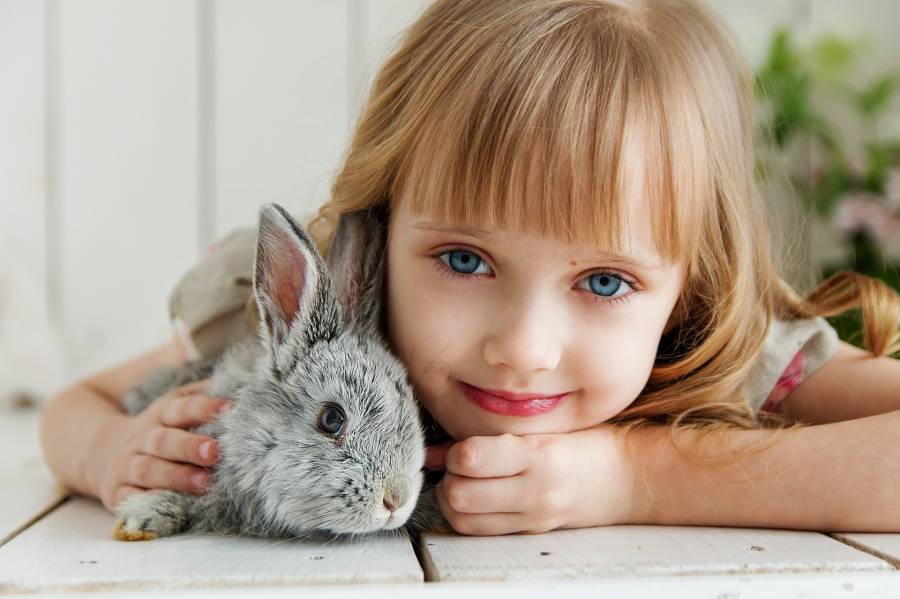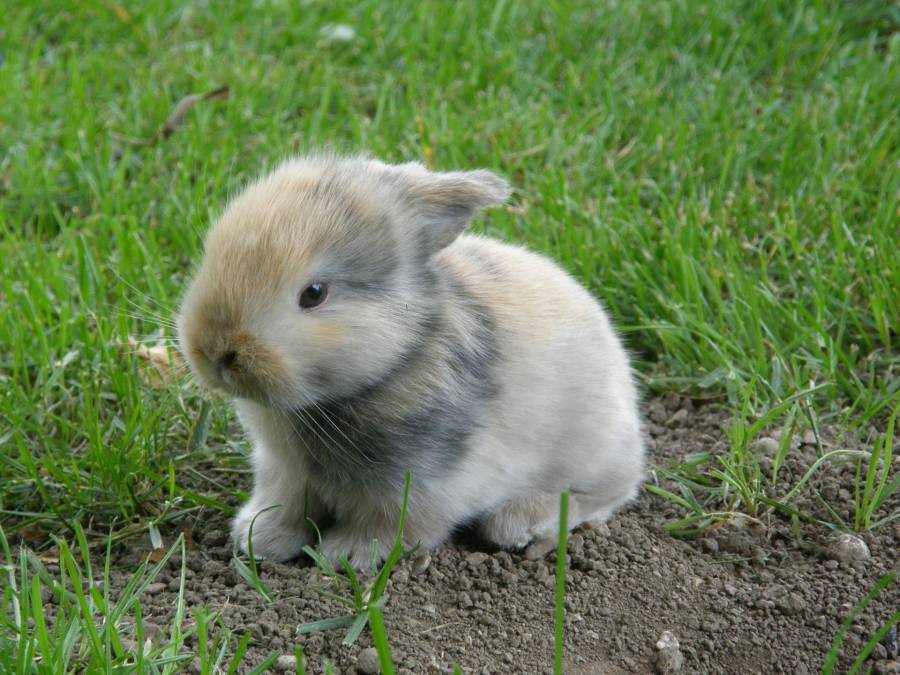Quick Navigation
If you’re a rabbit farmer, who keeps and nurtures rabbits of different ages, or simply a rabbit lover who found himself here, wanting to know more about feeding rabbits.
It would help if you understood that feeding and nutrition are as important as the art of keeping a rabbit itself.
You must know what kind of feed, the feed quality, and its additives, what time of the day to feed, the concentration of the feed, and the volume.

Here we are most concerned about what quantity of feed to administer to rabbits, especially the young ones.
How much should you feed a baby rabbit?
Feeding Manner In Rabbits
Rabbits are herbivores, and as such only feed on plants and their products.
When keeping young animals, the owner must watch the amount he feeds the babies and their actual consumption.
This way, you can manage your resources as an owner keeping rabbits as pets.
Watching your rabbit’s consumption rate can also help reduce capital and maximize profit if you are a rabbit farmer.
Did you know that baby rabbits are also called ‘kittens’?
How Much To Feed A Baby Rabbit?
As mammals, Rabbits nurture their young and feed them breastmilk till they are mature enough for weaning.
However, Suppose your rabbit just kindled and died during parturition, or you came by a nest of rejected baby rabbits.
In that case, you need to take up the responsibility of feeding them to ensure survival.
However, you should note a very low possibility of hand-raised rabbits surviving; just about 10 of a hundred cases survive.
The first thing to understand is that the volume to feed varies depending on the specific age of the rabbit.
You need to be careful with concentrations and quantities in feeding baby rabbits.
Rabbit milk is the most caloric of all mammals.
In preparing their feed, you need to get the Kitten milk replacer (the primary ingredient), whipping cream, acidophilus (supplements), and a sterile syringe or eyedropper.
A rabbit kitten will probably not be getting enough milk if you notice that it does not have a round belly (perhaps their siblings are monopolizing the teat).
At this point, you might need to step in and provide them with some extra meals.
The Rabbit Feeding Kit
The Kitten milk replacer is a synthetic replica of the rabbit’s breastmilk, and you can be gotten from a pet store.
When preparing your feed formula, you should add a tablespoonful of 100% heavy whipped cream to the kitten milk replacer.
It is to enrich the formula with enough calories.
After mixing with whipped cream, acidophilus is another supplement to balance the formula.
A bit of acidophilus helps lower the pH of the feed.
It helps to maintain the bacterial population of the intestine.
The amount to feed a baby rabbit also depends on what breed of rabbits you’re feeding and the size of your kitten.
Rabbits are fed daily, usually two to three times per day, but you should do it twice daily.
Usually, the smaller breeds of rabbits like the Columbia Basin Pygmy and the dwarf Hotot demand smaller feed portions.
In comparison, the larger breeds such as the Flemish Giant and the Blanc De Boscout should be fed more significant portions.
Feed is majorly measured using the Carbohydrate Count (cc).
It is essential to know what breed your baby rabbit is!
To Feed Your Baby Rabbit, Follow This Guide
- Newborn rabbits (1-7 days after birth) should be fed with a 4-5 cc formula.
- Rabbits between 1-2 weeks (7 to 14 days after birth) should be fed with a 10-15cc formula.
- Rabbits aged between 2-3 weeks (14-21 days after birth) should be fed with a 15-30cc formula.
- Rabbits between 3-6 weeks (21-28 days after birth) should be fed with a 30cc formula.
Rabbits start weaning around six weeks postnatal.
By then, they are more active, and you can start introducing solid foods.
How Do You Feed Your Baby Rabbit?
Knowing what volume to feed the baby rabbit based on the breed and age is not enough to sustain survival.
You need to understand how to feed the rabbit.
Your manner of approach and handling while feeding a baby rabbit affects how well your baby rabbit will eat.
Improper handling while feeding your baby rabbit can be fatal.

Naturally, the baby rabbits suckle from their mother while lying on their backs.
To mimic this posture and pattern of feeding:
- Wrap the baby in a soft towel and lay its back on a surface. The rabbit can also be positioned on your thighs or in your hands.
- Place the syringe at the opening of the kitten’s mouth to ensure that the formula can trickle.
- The baby rabbit starts suckling from here.
If the baby rabbit does not suckle, you should be as patient as possible and try adjusting your posture.
You can also try to adjust how you are handling the rabbit.
Do not force the feed by squirting! It can cause aspiration of milk into the lungs and lead to death.
Introduction Of Solid Foods
Before the rabbit opens its eyes, you need to make sure the rabbit urinates and defecates.
It is to make the intestinal and urinary tracts function correctly.
As the keeper, you help the rabbit stimulate the excretion of feces and urine by dabbing and gently massaging the genital area with warm water using a soft cloth or cotton ball until it begins to pass out stool and urine.
You keep stroking until there are no more excreta.
About ten days after birth, the rabbit opens its eyes, and you can start introducing solids like pellets and hay.
Plants like alfalfa and orchards can be left in the corner of the cage or box, easily accessible.
The pellets introduced should have high fiber content, and they should be as plain as possible to make the feed easily adaptable for the rabbit’s intestine.
Giving Your Baby Rabbits Water
As an essential component of food, water cannot be overlooked.
It is vital to feed your baby rabbits water to keep them hydrated like any other animal.
This aids the digestion of feed.
However, in giving them water, ensure the water dish is shallow to prevent drowning; baby rabbits can drown in deep dishes.
Make sure that the water is hygienic to prevent contamination and subsequent infection.
Change the dish frequently also for hygiene purposes.
Additionally, the majority of rabbits can control their own water intake without assistance from humans.
They will hydrate themselves with water from their regular diet and drink when they are thirsty (leafy greens contain lots of water).
Every now and then, however, you’ll come across a picky rabbit.
They won’t consume sufficient amounts of water, which increases their risk of getting sick.
There is a lot you can do in these situations to encourage your rabbit to drink more water.
Give your rabbit a large bowl to drink from if you want them to drink more water.
This keeps rabbits’ bodies more naturally hydrated.
If this doesn’t work, you can also try flavoring their water in small amounts or encouraging them to drink water along with their leafy greens.
What Other Foods Can You Feed Your Rabbit?
Once the eyes are open and you introduce solid foods, you can feed your baby rabbit with hay, pellets, grains, fruits, vegetables, treats, and fresh water.
Hays are the staple in the composition of feed, and pellets should be added to the feed in small quantities.
As the rabbit grows older, you can mix more vegetables in the feed.
Rabbits love vegetables. You can give your growing rabbits portions of fruits once or twice daily.
Water should be made constantly available.
The health of baby rabbits you should take with the utmost relevance.
The survival ratio after rejection by the mother or orphaning by postnatal death is minimal.
As a keeper or farmer, if you notice issues with the feeding pattern of your rabbit, take it to the veterinarian as soon as possible.
Like every other mammal, loss of appetite can be a symptom of myriad dysfunction and illnesses.
Balance Is The Key In Feeding Baby Rabbits
The essential idea in feeding a baby rabbit is balance.
You shouldn’t underfeed a baby rabbit to prevent malnutrition and dehydration.
It would help if you did not overfeed to prevent constipation and bloating.
You can refer to the prescription listed above to know what volume to feed your baby rabbits based on their age.
Baby rabbits are adorable, and next time you come by a nest of abandoned baby rabbits, what you have to do is to visit the nearest Veterinarian to test for diseases or infections.
Then visit a pet store to get your rabbit feeding kit.

Purrfect n’ Pawesome is the brainchild of Amanda, who has been into researching and writing about pets to help other pet parents in nurturing their adorable pets. Currently, she runs Purrfect n’ Pawesome along with her team of experienced and dedicated pet experts. Along with being an awesome writer and entrepreneur, Amanda is a cat mom to two innocently spoiled cats, Balanca and Scruffy.
She has been writing about pet care and nurturing and wants to share her readers’ experiences, learnings, and knowledge.
Over the years, she had the opportunity to work with various pet owners having multiple breeds, and that exposure gave her experience and the lessons of a lifetime.
Her family, her entire universe revolves around her two cats, who give her endless support and inspiration to move ahead with her objectives in life. Amanda is a live example of a balanced approach to all parenthood questions we all face in life.
